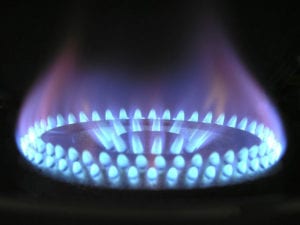Industrial burners are an important piece of equipment. Making the right choice takes the right information to ensure that your investment is in good hands.
There are quite a few varieties of industrial burners out there, and selecting the right one can have huge upsides for your company. But, this can be a headache. There are a ton of applications for industrial burners, and they keep getting more and more complicated by the day. That’s why you need to stay informed and up to date so that you can make the best decision possible to avoid downtime and potential headaches down the road.
However, it doesn’t have to stress you out too much. There are some key aspects of industrial burner selection that you should keep in mind. Think of these as the foundation. While there is quite a lot you can do when building a structure, the principles for a solid foundation remain. The same can be said for choosing which industrial burner is right for you.
When it comes down to selecting your first or next industrial burner, here are some crucial variables to consider.
Figure Out Your Capacity
First things first, you’re going to need to know what burner capacity you need. This is measured in what is called BTU’s (British thermal units). Burner capacity is essentially the minimum and maximum BTU’s that can be released with a stable flame in place with adequate combustion. Think of burner capacity as your highest and lowest firing ranges.
When choosing your industrial burner, you’re going to need to think about what function and process it serves. This will help you figure out if there is enough capacity to get the job done. This is your Goldie Locks effect. Too little capacity and you risk minimizing your workload and combustion, which can negatively affect production. This is where you end up hurting your bottom line. Too much capacity and you’re essentially wasting money. Your burner was designed for something much more demanding and isn’t being used to its full potential.
If you really want to get the most out of your burner and eliminate potential hiccups in production, it’s important that you take the time to research the capacity you need. Keep in mind, it’s always better to overcompensate than underestimate — especially if you plan on scaling.
Don’t Forget About Turndown
Turndown importance is just as important as capacity, but it’s often overlooked. Turndown performance is measured as the ratio of maximum to minimum capacity — and determines the burner’s potential to handle various workloads sizes.
The rule of thumb for turndown is that it must be equal to, or larger than, the turndown that is required for a specific process. Typically, turndown for most applications isn’t all that large. But, it’s still an important factor to consider to ensure that you’re selecting the right industrial burner for the right application. Failing to take this into account can have some serious effects down the road.
Understand Flame Geometry
Different chambers require specific flame geometries. Burner manuals can help you make the best decision possible so that your flame isn’t too long or too short.
Take into account cross velocities and backpressures. Cross velocities can affect flame stability and lighting, while backpressures affect gas or air flow. It’s important to understand both flame geometry and how that flame is affected once it’s in the chamber.
Get The Right Temperature
We know, we’re really hammering down on getting all of these little details just right — but they matter. Just like with your capacity and turndown, getting the right temperature is all about meeting your needs in the middle.
Your temperature should be determined by your application. There are essentially two temperature types you need to be on the lookout for.
High temperature burners operate above 1000°F
Low temperature burners operate below 1000°F
Pick The Right Mounting
This one may seem like a no-brainer, but the right mount plays an important role in burner maintenance and overall convenience down the road.
There are really only two types of industrial burner mounts available.
- Wall-mounted burners make access a whole lot easier. The downside is that they can be affected by cross velocities
- In-duct burners are inside the duct and are a bit more challenging to access. The upside is that they are less likely to be affected by cross velocities.
Choosing the right mount really comes down to application. Figuring out if you’d rather have easy access comes down to if or when regular maintenance may be required for a specific application. If you know that you may have to perform this regularly, then the wall-mounted option is probably your best bet.
Know Your Ignition

Industrial burners are lit one of two ways. Or in some cases, they can be lit by both.
- Direct Spark
- Pilot
When determining which type of ignition you should go with, it’s really all about the application. For instance, direct spark produces carbon — so if that’s an issue, stray away.
Don’t Skimp Out
Choosing the right industrial burner isn’t something to take lightly. Not only will this impact productivity and your bottom line, but it’s also an investment that can last if chosen correctly.
If you’re still unsure about which burner is right for your application, contact us! We’d love to give you a hand.





